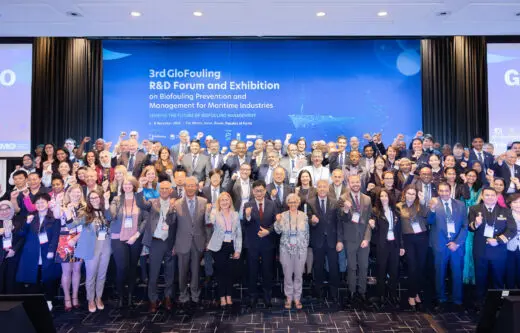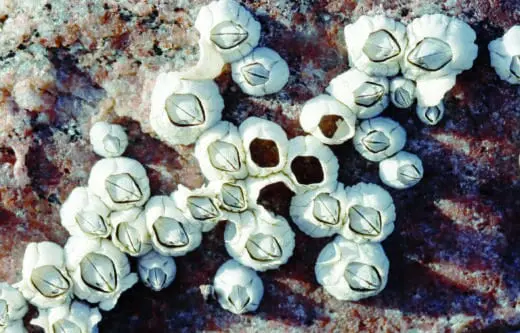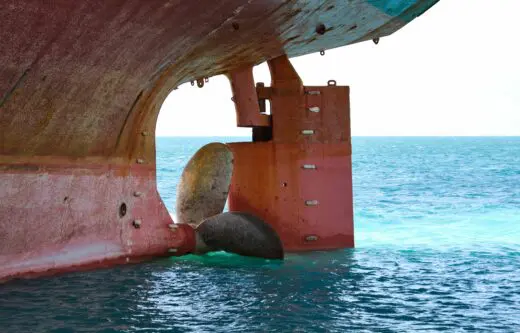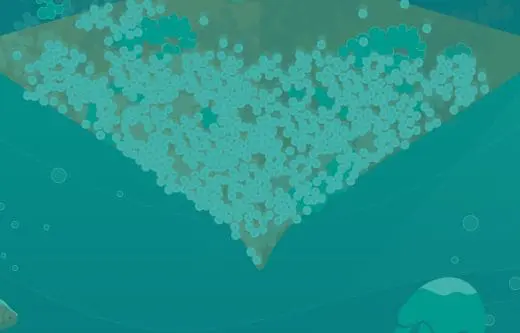Biofouling & Niche Areas: Managing an Expanding Issue
Seablindness refers to society’s lack of understanding of its dependence upon shipping and the sea – the things we all take for granted, such as food, energy, security, and the vital role our seafarers play in all our lives.
Marine biofouling build-up on ship hulls and submerged niche areas may also be out of sight and out of mind, even though they represent a huge environmental impact and constant commercial threat building up under the waterline.
The negative impacts of biofouling are increasingly well-documented and the issue has been thrust into the spotlight in recent years due to the huge risk that ship hulls, as a vector for invasive aquatic species (IAS) transfer, pose to biodiversity in local ecosystems and economies around the globe.
Biofouling on a hull also decreases a ship’s efficiency since it creates additional hydrodynamic drag when the hull travels through water. This in turn creates greater fuel demand to maintain the same speed through water. Or, if a ship is operating on fixed shaft power or a set fuel consumption, speed losses result.
One type of biofouling organism has a particularly detrimental effect on ship efficiency and fuel consumption: the humble barnacle. Grouped with other hard-shelled organisms, this type of ‘hard biofouling’ will create the highest levels of hydrodynamic drag on a hull. A study conducted by I-Tech and independent coating consultants, the Safinah Group, in 2020 revealed that barnacle fouling adds an estimated $6 billion to the shipping industry’s annual bunker bill.
This shocking figure is based on the study findings that out of 249 ships of most types and sizes inspected over a four-year period between 2015 and 2019, more than 40% were suffering from over 10% hard fouling coverage on the hull. This level of hard fouling and its impact was quantified using published data taken from a 2011 study by Michael P. Schultz that examined biofouling impact on shaft power requirement.
The scale of barnacle fouling on the global fleet, as quantified in this study, also makes this type of biofouling a significant contributor to shipping’s carbon footprint since even 10% barnacle fouling on just under half of the global shipping fleet would equate to around 110 million tonnes of excess CO2 emissions annually.
Shipping’s carbon footprint is increasingly being scrutinised by regional regulators, the IMO, as well as outside commercial influences such as the Poseidon Principles and the Sea Cargo Charter. Seeing as the biofouling challenge is only likely to increase as water temperatures rise due to the impact of climate change, it should be of key consideration as an issue to tackle when decarbonising ships for owner and operators. Especially as warming waters temperatures increase the risk of barnacle fouling and many of the industry’s key trade routes put ships directly in biofouling hotspots.
Biofouling Seablindness
Yet, even among those that recognise biofouling on ship hulls as being a huge risk to the bottom line and to the environment, there is an additional sub-layer of sea blindness emerging. While a significant amount of emphasis is focusing on biofouling on the flat surfaces of the hull, there are other areas within a hull structure that are not so well-known for their risk to the environment and ship operations if biofouled: niche areas.
Cumulatively, niche areas represent a significant proportion of the underwater surface area of the global shipping fleet — approximately 10% of the total surface areas available for colonisation by biofouling marine organisms. While biofouling in niche areas - which includes sea chests, gratings, and box cooler inlets - may be a small percentage of a vessel’s hull surface, these areas can cause huge negative impact to a ship’s operations.
The aforementioned research study conducted by I-Tech and the Safinah Group also found that hard fouling was present in 95% of niche areas in the 249-ship sample inspected and analysed. Therefore, even if a ship has a barnacle-free hull, their niche areas could be heavily infested, putting them at risk of spreading IAS and also putting the functionality of the niche area at risk of malfunction.
Although the main penalties of biofouling in niche areas lie within the regulatory efforts to limit the spread of IAS, particularly in certain regions of the world, there are also commercial drivers to dealing with niche areas head on.
For example, biofouling in box coolers can impede the engine cooling system, reducing their efficiency in cooling inlet water during the start-up process as part of the cold-water chain. In the worst-case scenario, heavy fouling of the sea chest grate can lead to a total failure of the box cooler.
Limiting biofouling in niche areas
Undoubtedly, current approaches to preventing the build-up of biofouling in niche areas are not up to standard, yet there are simple steps that the shipping industry can take to tackle this problem.
The first step is to pay greater attention during the application of antifouling coatings to niche areas. For example, taking greater care during the coating application process. This includes considering antifouling coatings with a higher polishing rate for specific use in the niche areas and those that include additional protection against barnacle fouling, such as antifouling coatings that contain Selektope®, an active agent which, when added to coatings, repels barnacles even under extended static conditions of 45 days+.
When it comes to niche areas and preventing biofouling build up, it’s time for greater attention to be paid to biofouling mitigation in niche areas, and this isn’t just a case of taking advantage of antifouling coating technology in the short term, application methods and the design of niche areas should be re-visited on a long-term basis.
THIS ARTICLE WAS WRITTEN FOR CLEAN SHIPPING INTERNATIONAL MAGAZINE - SPRING 2021 ISSUE
Related articles

Innovative Solutions and Global Collaboration: Highlights from the 3rd GloFouling R&D Forum in Busan

Barnacles: Invited or Invader?

Exploring the Diversity and Resilience of Barnacles!

